The Pearly Queen
A flash of vivid orange flies across my path as I saunter amongst the wild flower meadows of Umbria in Italy. This tell-tale strong colour is highly likely to be a fritillary butterfly, be it back home in the UK or in continental Europe. Here in Italy this mysterious orange insect could be one of over 20 species of fritillary so I need to track it down.
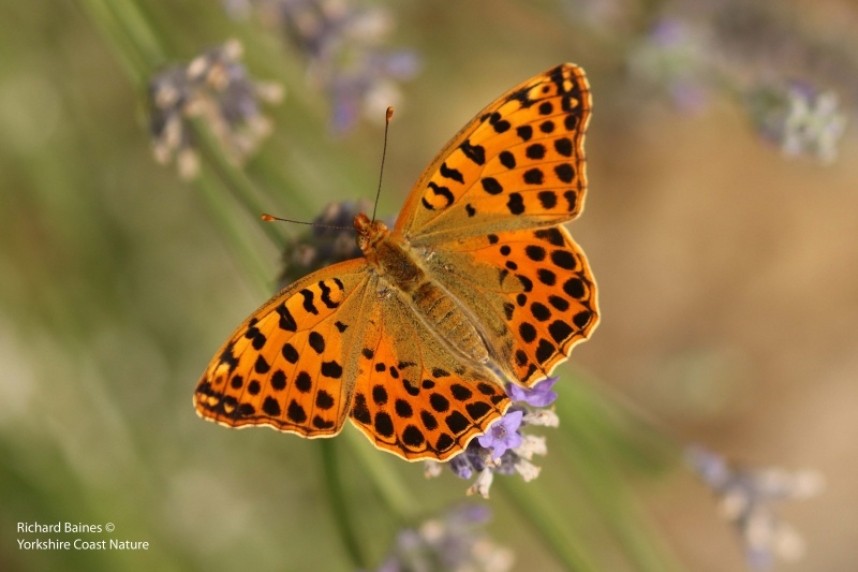
Queen of Spain Fritillary (male) © Richard Baines
This is not such a difficult task as the majority of butterflies here are remarkably easy to approach even in the hottest part of the day. Perched atop a scabious flower with wings closed this most beautiful of butterflies shows off its underwing, and there in full glory are the distinctive large pearls of the magnificent Queen of Spain fritillary.
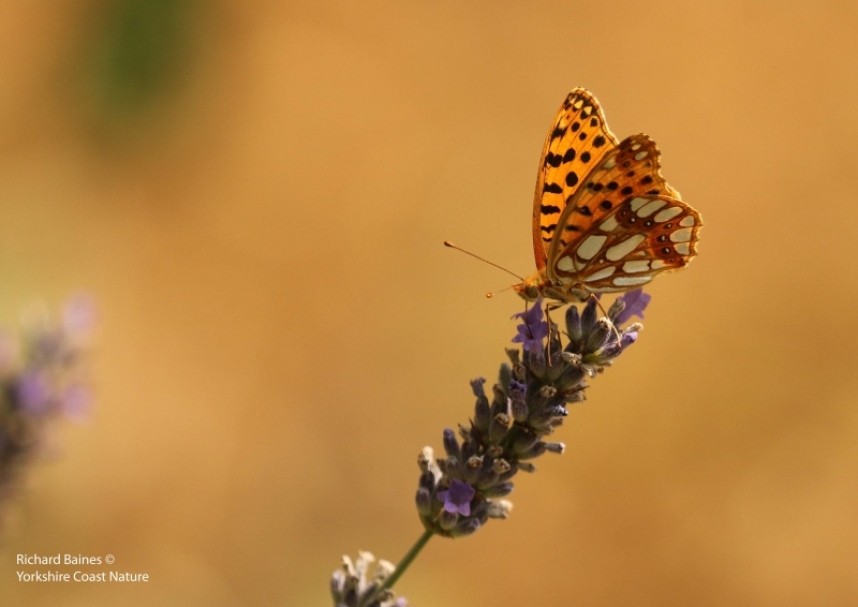
Queen of Spain Fritillary (male) © Richard Baines
The sun catches the pearls, flashing their soft iridescence.
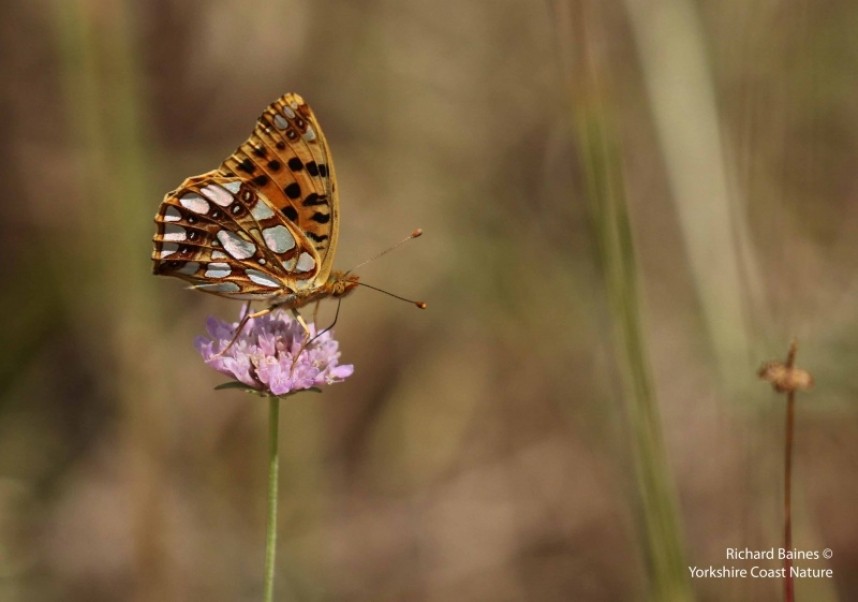
Queen of Spain Fritillary (female) © Richard Baines
In natural history there is nothing quite like the hypnotic effect a gleaming butterfly has on our psyche. As I stand in wonder, I lose all sense of time and daily chores fade away. I soak up the riot of colour, intricate symmetry as this male fritillary, a marvel of evolution, he chases suitors across the meadow before returning to flaunt his pearls on his favourite flower.
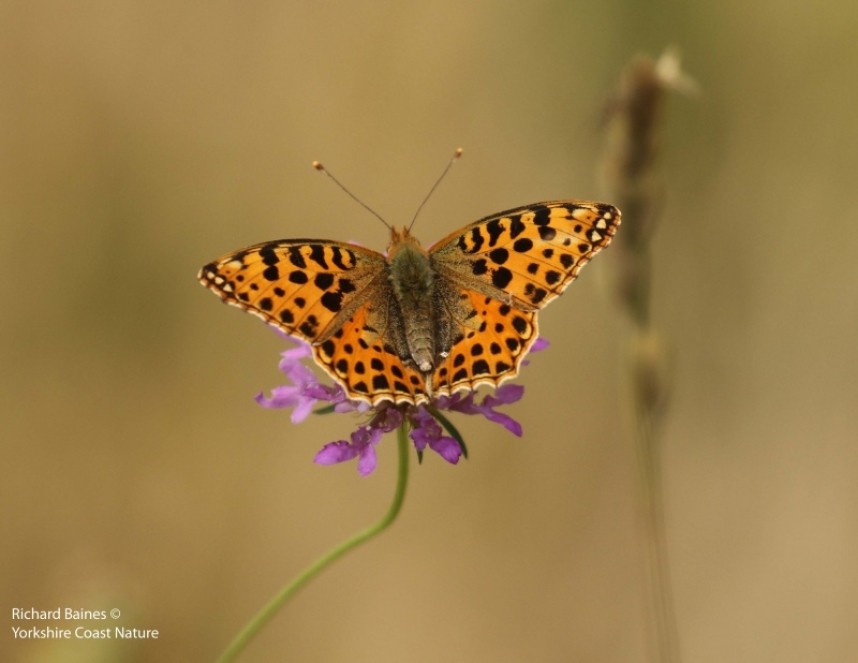
Queen of Spain Fritillary (female) © Richard Baines
The Queen of Spain butterfly was first named in English in 1775 with no explanation as to the authors choice of name. It is tempting to think that the real Queen of Spain had the largest pearls in Europe at that time… Her namesake now carries on the tradition flashing its jewels in many European countries, invading in true Armada style. The Queen even reaches our shores occasionally, the last significant numbers were found in 2008/9 when breeding was recorded in the south of England.
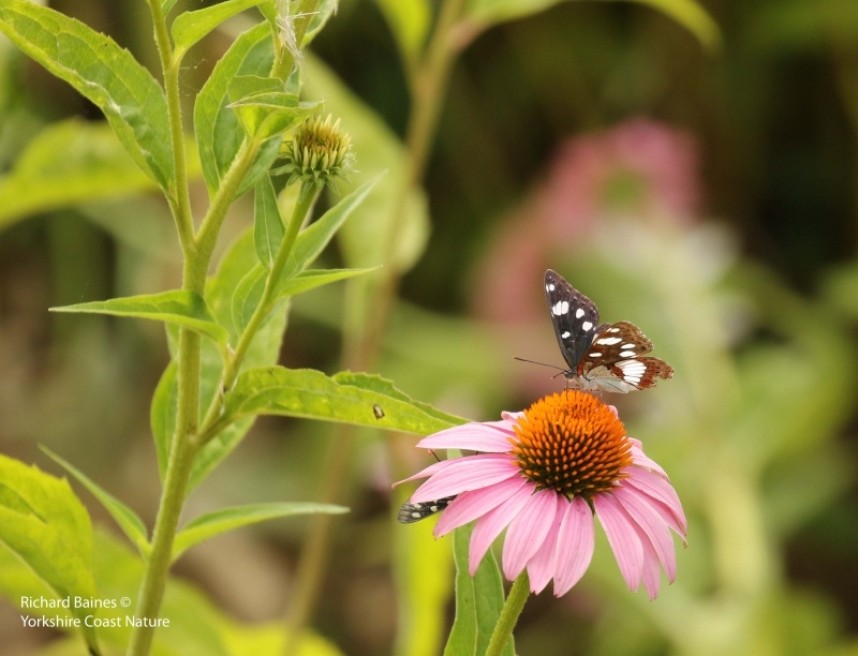
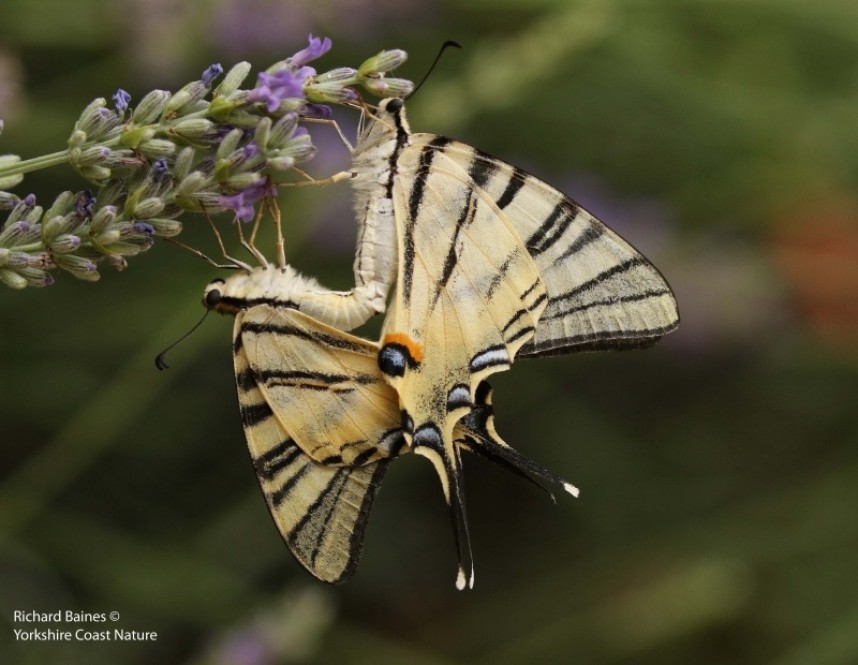
Scarce Swallowtail © Richard Baines
The woodland meadows and nearby gardens in this area of Italy are great for butterfly watching. Clouds of brown argus in discrete areas of open ground, common blue in abundance and smaller numbers of Amanda’s blue. Larger species zig zag and glide across the flowers; marbled whites, silver-washed fritillaries, clouded yellows, scarce swallowtails and southern white admirals.
In three days, I have counted 32 species within a 200m area. It helps that the garden of the farm house where we are staying (Poggio Le Stalle) has a beautiful array of irresistible nectar sources from lavender to echinacea.
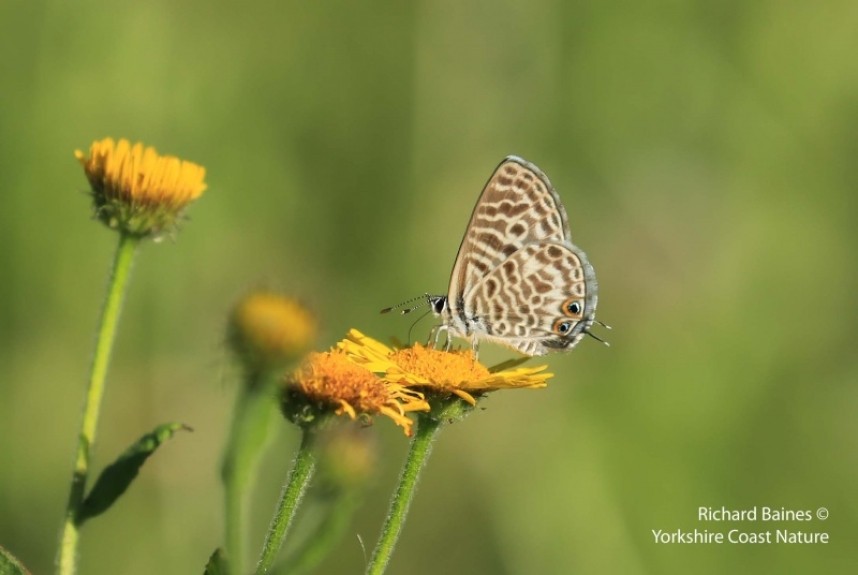
Lang's Short-tailed Blue © Richard Baines
Many species are tempted into the garden from nearby meadows; Lang’s short-tailed blue, long-tailed blue, large copper and ilex hairstreak join hummingbird hawk-moths and the charismatic broad-bordered bee hawk-moth.
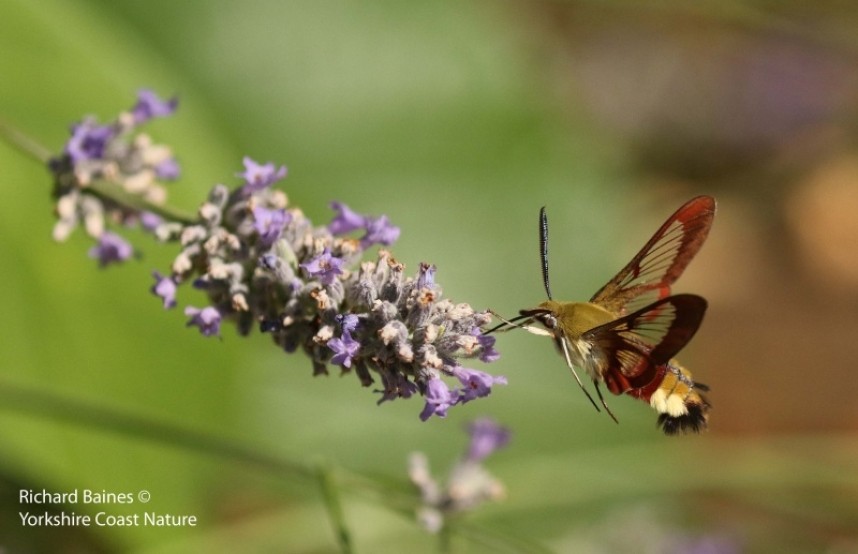
Broad-bordered Bee Hawk-Moth © Richard Baines
This is my third visit to this area and every time I find something new. On this visit I am wooed by large numbers of Queen of Spain fritillaries. In 2016 I was graced by a very impressive two-tailed pasha.
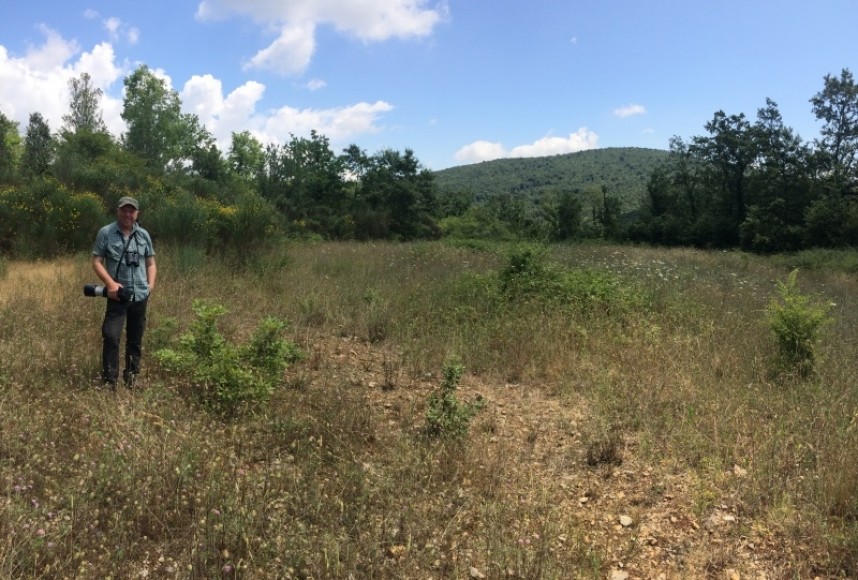
Richard Baines YCN Director in the woodland meadows of northern Italy July 2019 © Jo Ruth
With rolling hills covered in broadleaf woodland and meadows full of wild flowers, this is insect heaven and a riot of colour.
Richard Baines YCN



 Back to Blog
Back to Blog
